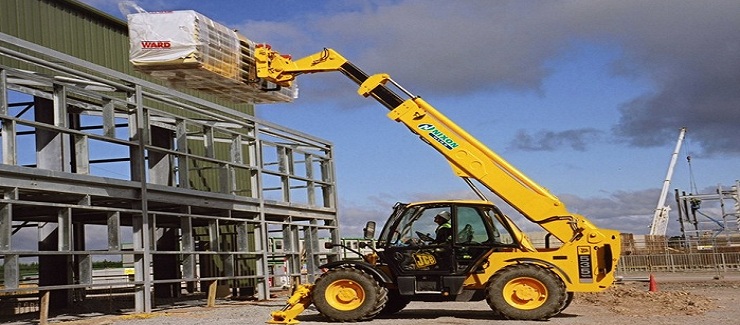Telehandler Training Courses

Telehandlers, the workhorse of many an industry, can be found on construction yards, agricultural sites and in warehouses across the country. Their supreme manoeuvrability, versatility and superior lifting capacity make them ideal for lifting heavy loads on rough terrain or in hard to access places. As such, thousands of companies across the UK have invested in their own telehandler, or lease one or more of these machines from a company like UK Forks.
What many do not realise, however, is that telehandlers and other similar lifting machines should only be driven and operated by competent individuals who have undergone specific and appropriate training. This requirement is set out in the HSE Approved Code of Practise L117 for those searching for more information. Moreover, many firms are now refusing to hire telehandler operators that do not have certain qualifications.
There are several providers of telehandler training courses across the UK, each with slightly different entry requirements and slightly different course material, exams and certificates. With that in mind, each course will broadly cover the same set of topics and choosing the right course should come down to a number of different criteria. The price of the course is naturally very important, although factors such as the accrediting body, course length and quality of teaching should also be taken carefully into account.

Many courses will have a set of entry requirements, such as other exam results in basic site safety or equivalent. Those that do not are still likely to require a good understanding of the English language in both spoken and written format.
The qualifications the course offers will largely determine its value and hence it is important to pick one run by an industry recognised institution. The most recognised industry qualifications are the CPCS Red and Blue cards, which last two years upon completion. These qualifications are split into four telehandler categories:
– A17A: Industrial telehandlers
– A17B: Telehandlers up to 9 metres
– A17C: Telehandlers above 9 metres without 360 slew
– A17D: All sizes of telehandlers
As mentioned, many employers are refusing to take on new staff without these qualifications although may be willing to pay for existing staff to take the courses.
The courses will typically cover a range of topics, including:
– Planning: most courses will begin with a lesson on how to safely plan telehandler operations. This will involve everything from setting up a safe lifting area to ensuring clear the correct machine and attachments are chosen for the job.
– Operation: a major part of both the theory and practical parts of the telehandler course will be on how to operate the machine for normal tasks. This will involve driving the vehicle safely, manoeuvring it around a site and performing tasks such as lifting loads and people.
– Attachments: a particularly important part of safe telehandler operation is the selection and fixing of the various attachments that a telehandler can support. Students will learn how to attach and detach basic attachments, such as forks, as well as choose the correct attachment for a particular job.
– Maintenance: all telehandlers must be carefully maintained, a responsibility that falls at least in part to its operator. All good courses will cover the basics of telehandler maintenance, including the vital checks to perform before every lifting operation.
– Loading: students will also learn the principles of loading a telehandler, involving how to interpret a telehandler’s load charts. These are vital for performing safe lifts within a machine’s maximum rated load capacity.
– Safe operation: every course will cover the basic principles of health and safety and how to operate a telehandler safely. This topic will likely be intertwined amongst the others as well as having lessons dedicated to it.
The courses are usually split into three sections, which follow on from the last. Prospective students can begin the first providing they meet the entry requirements before progression to stage two and finishing with an exam in stage three. Stage one is typically theory based and is spent in classrooms learning the fundamentals of telehandler operation. Stage two is the practical stage and is spent out in the yard practising what was taught in the classroom. Provided the students pass the theory and practical exams in stage three, the qualification will be awarded.
